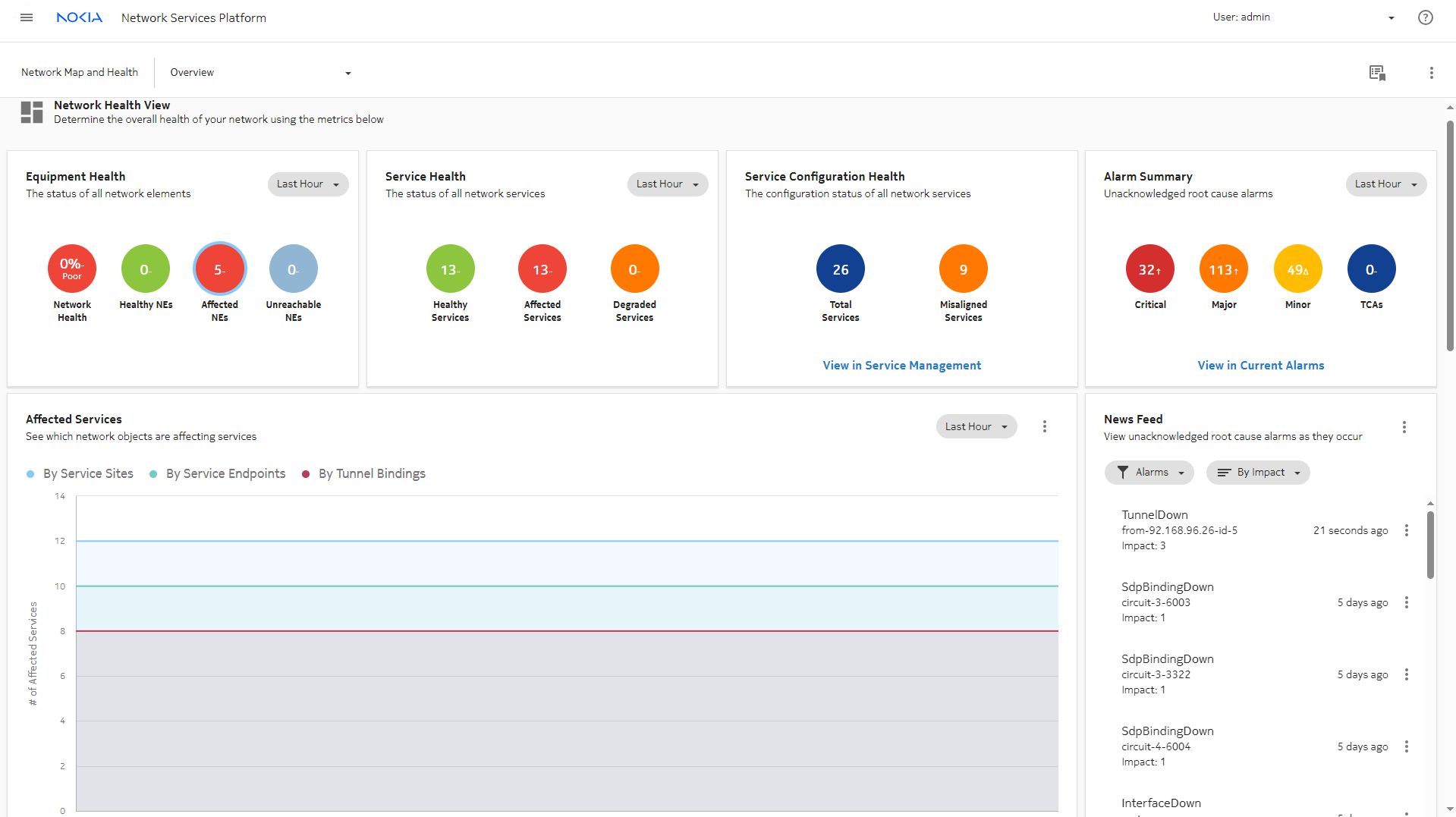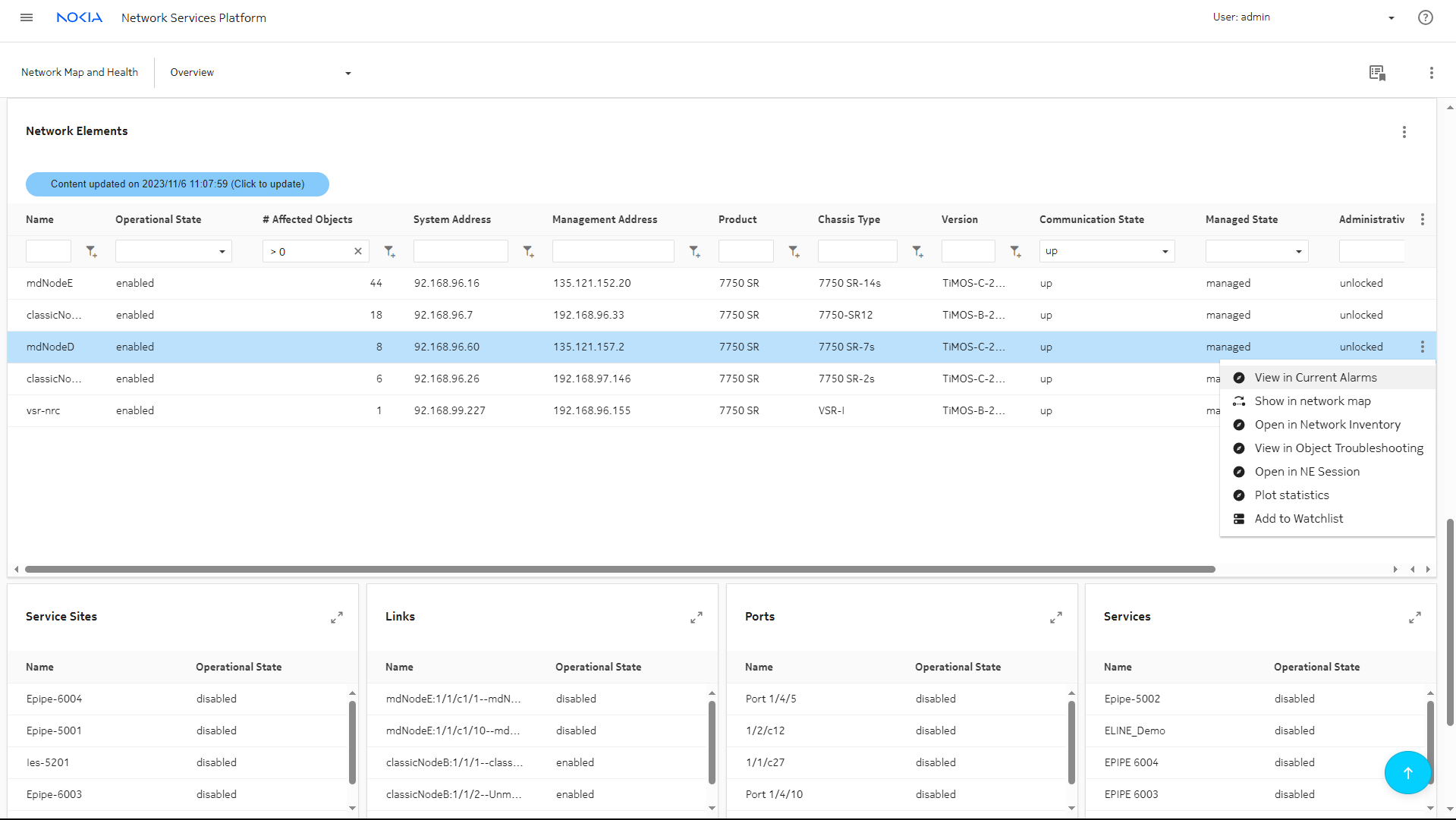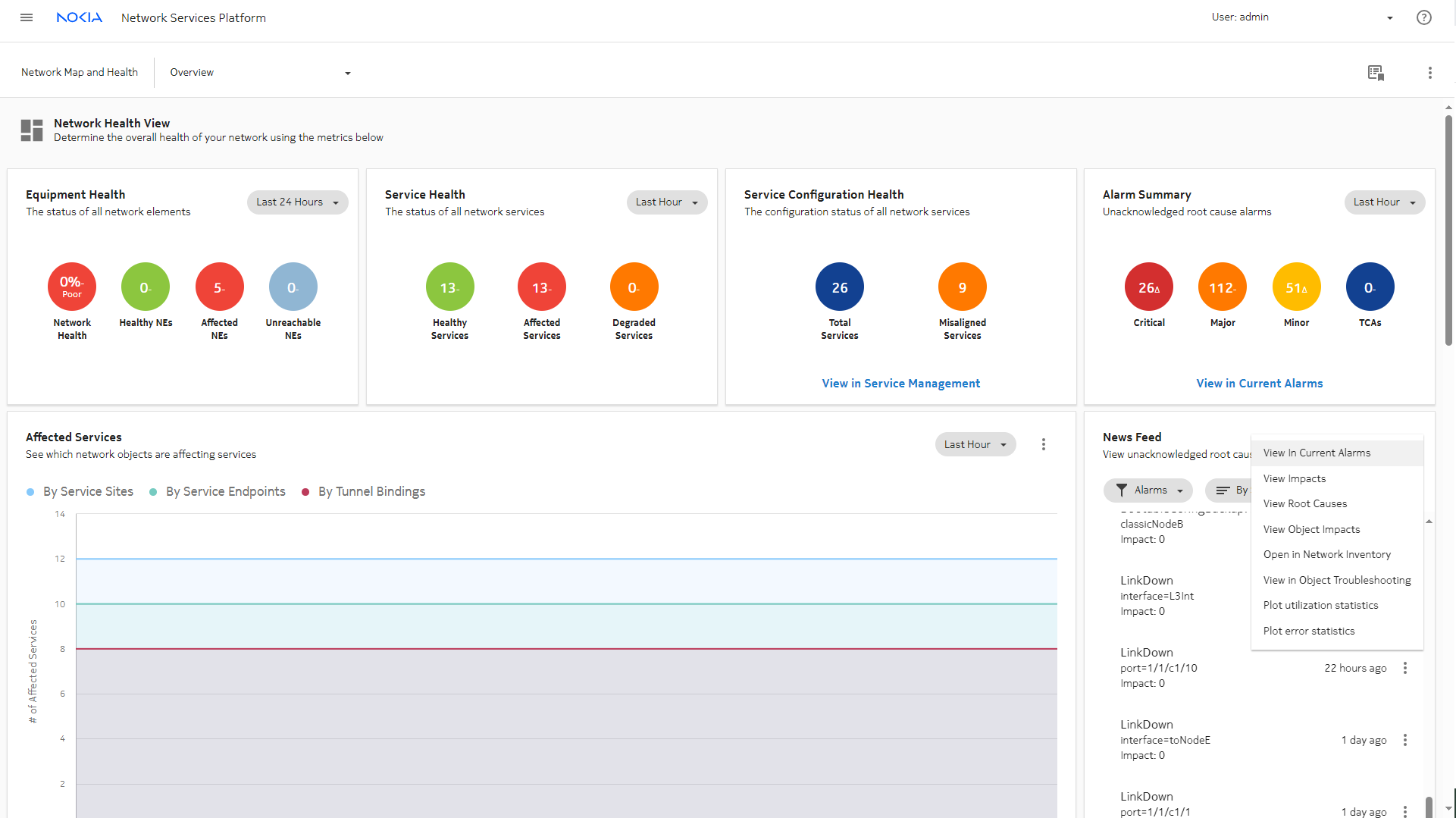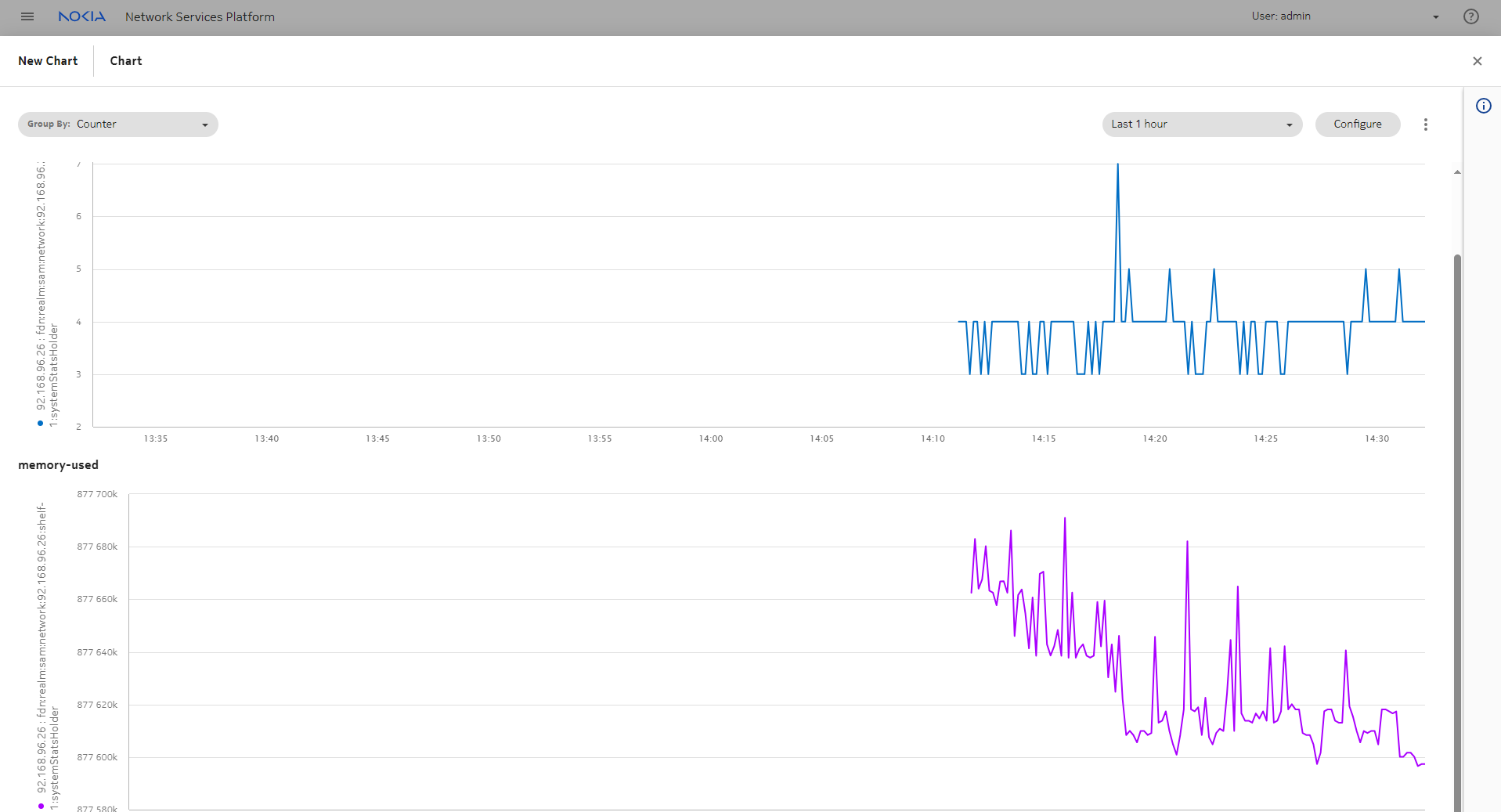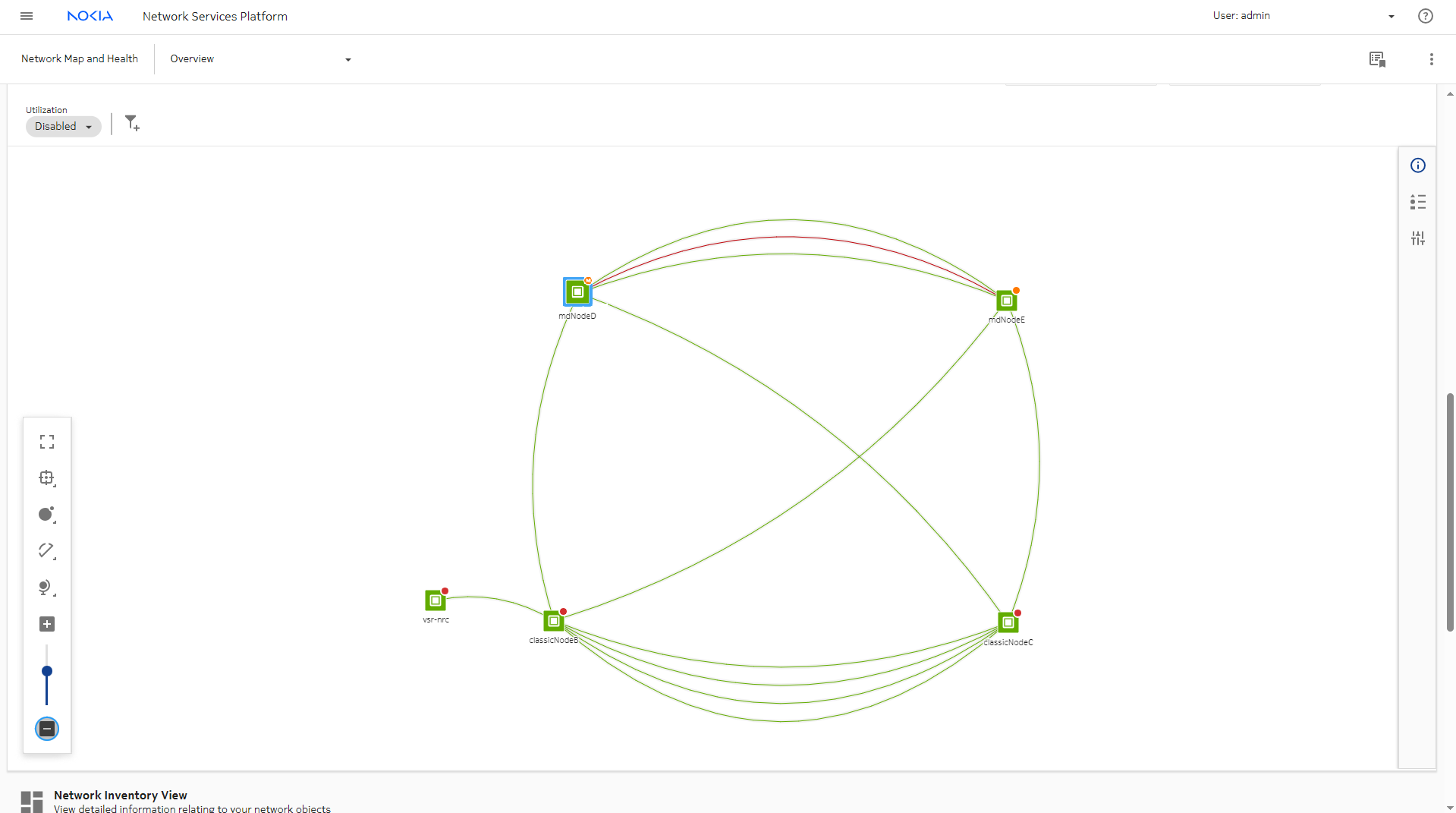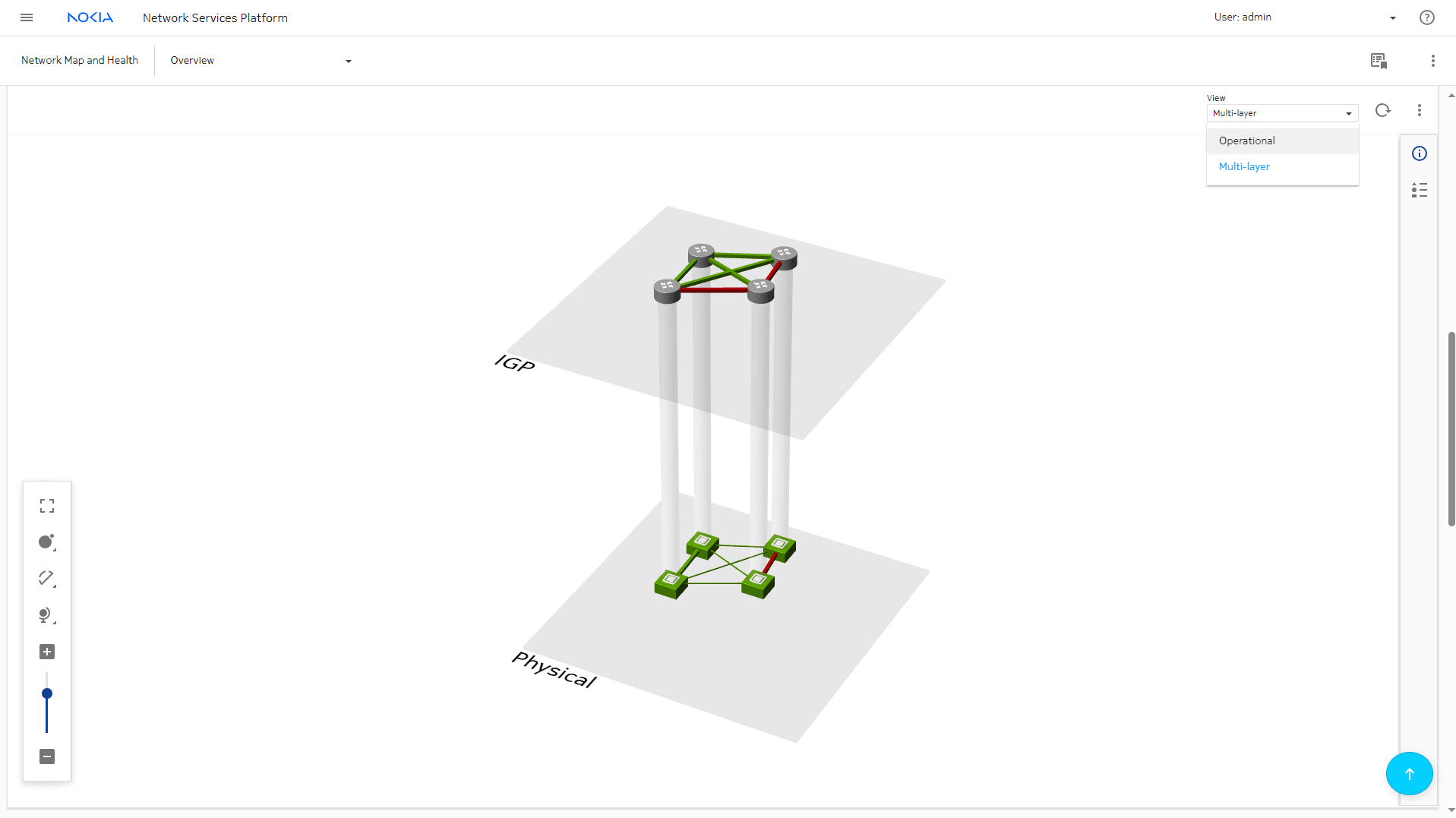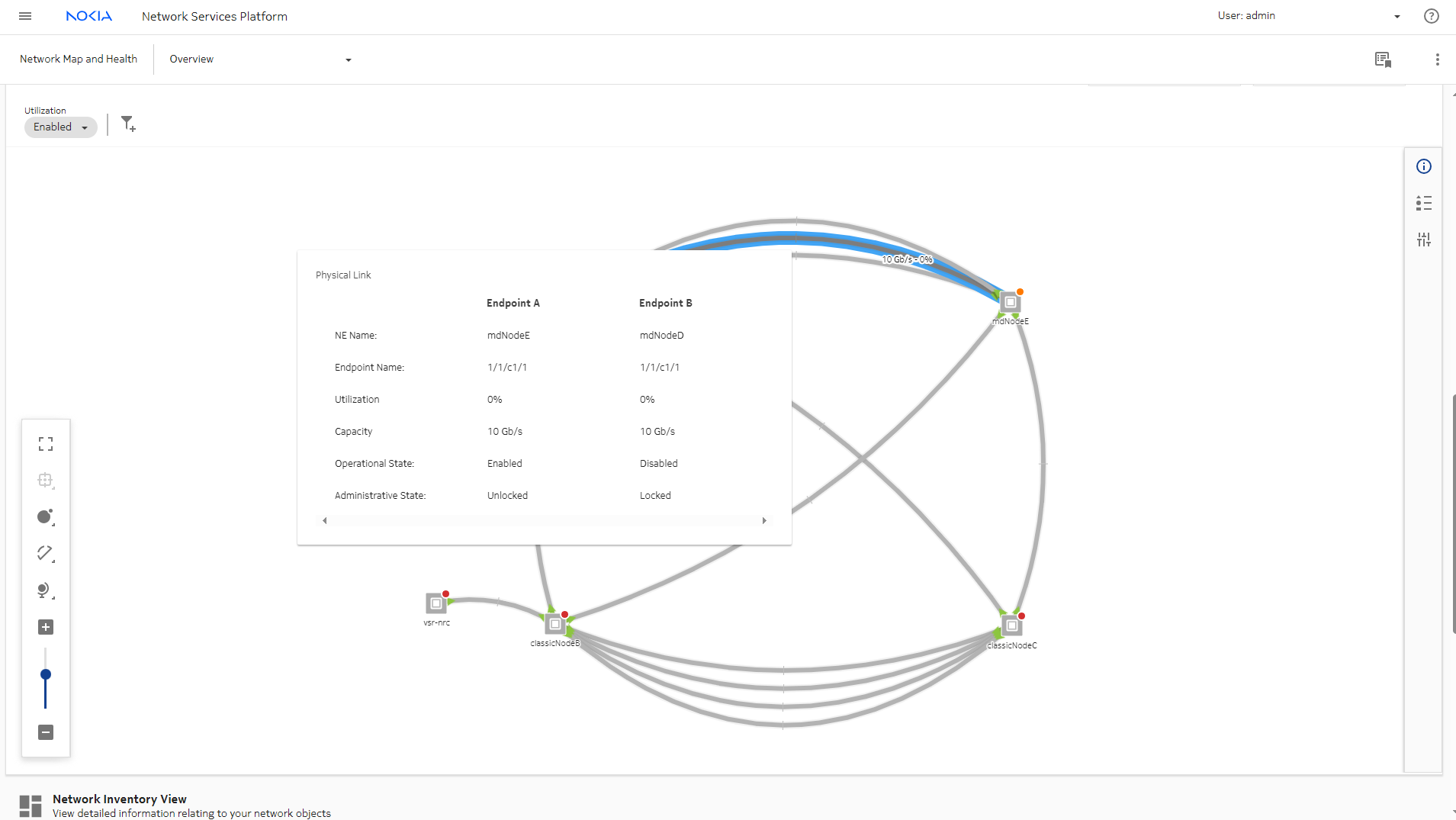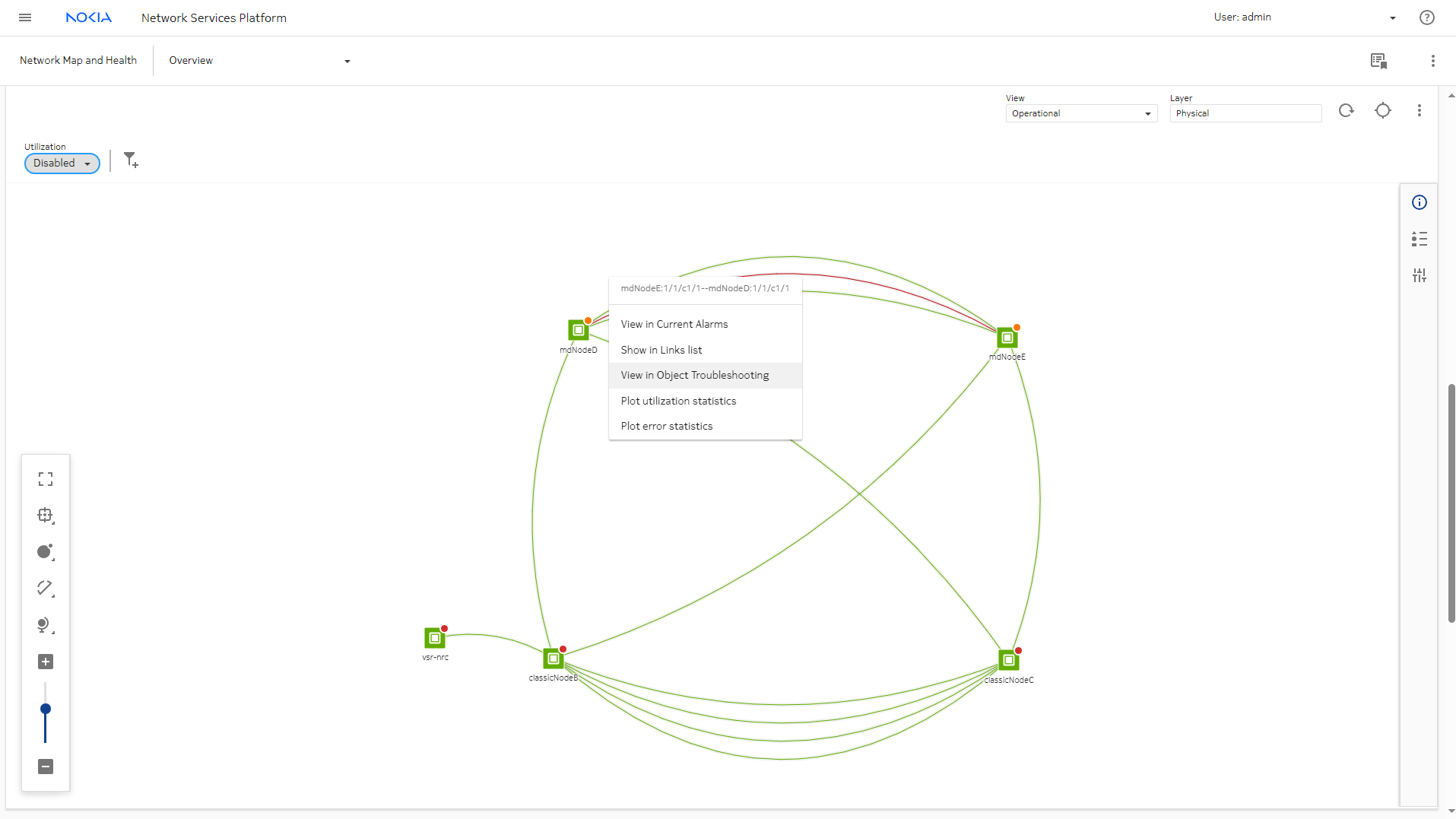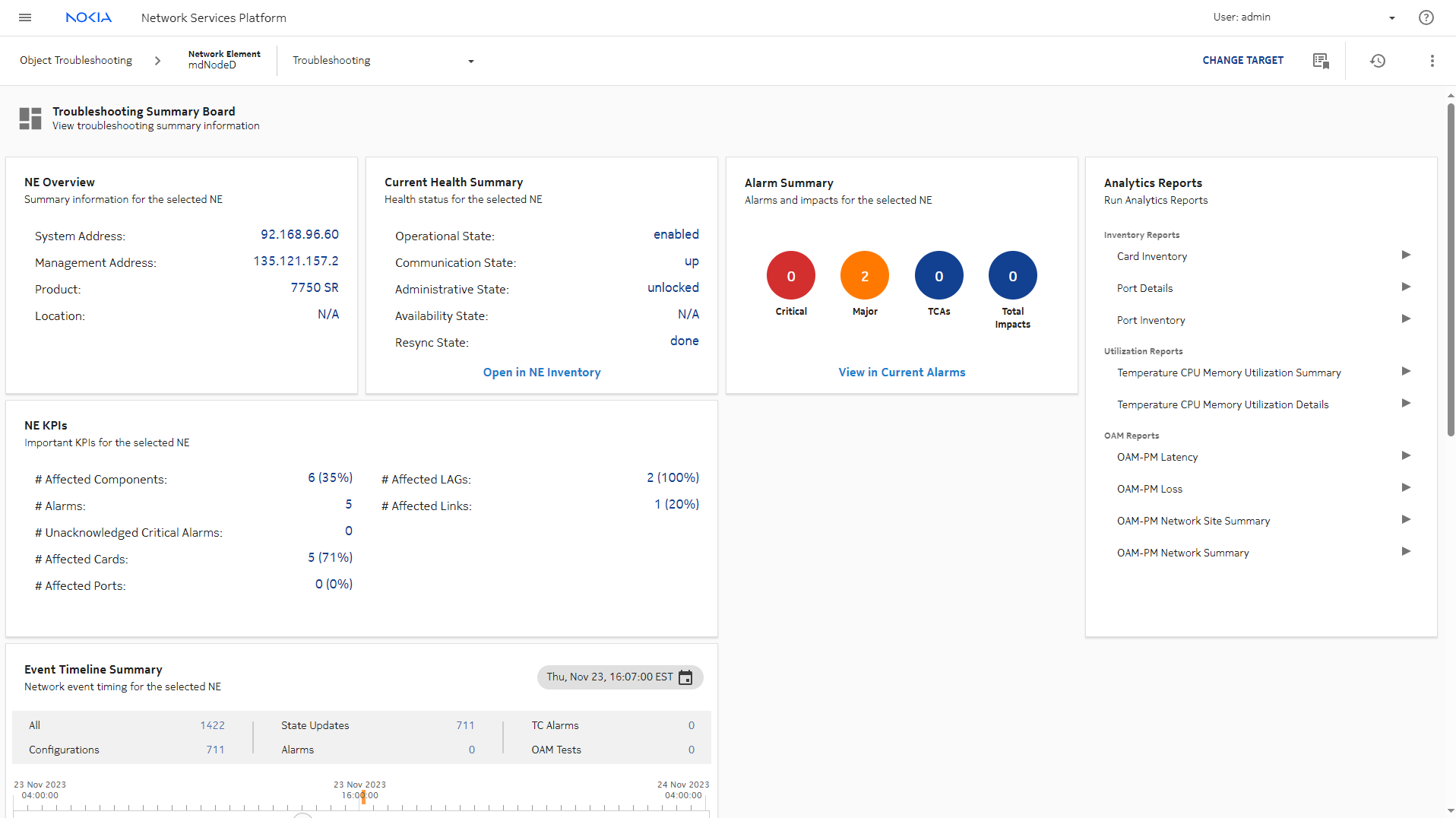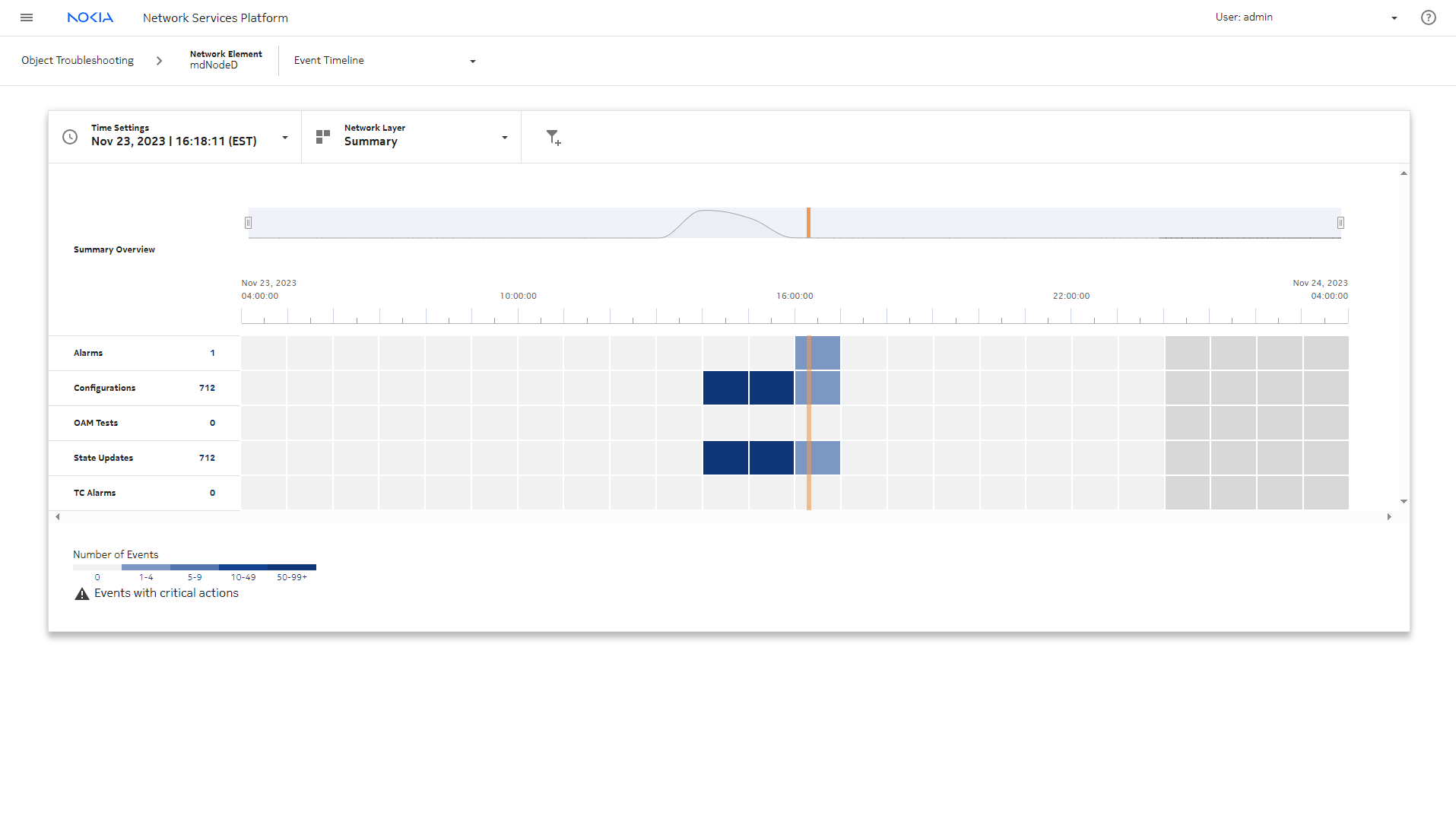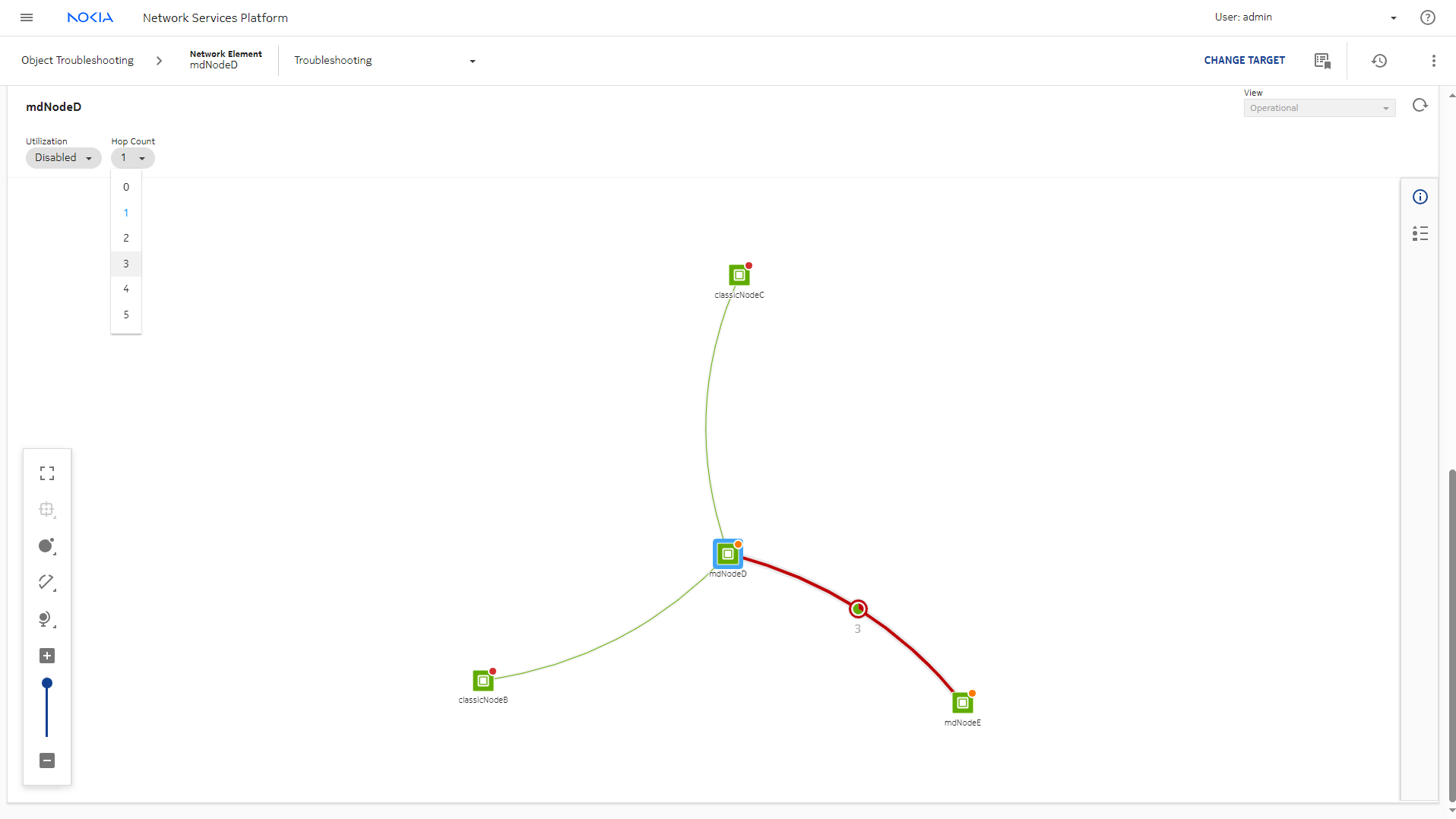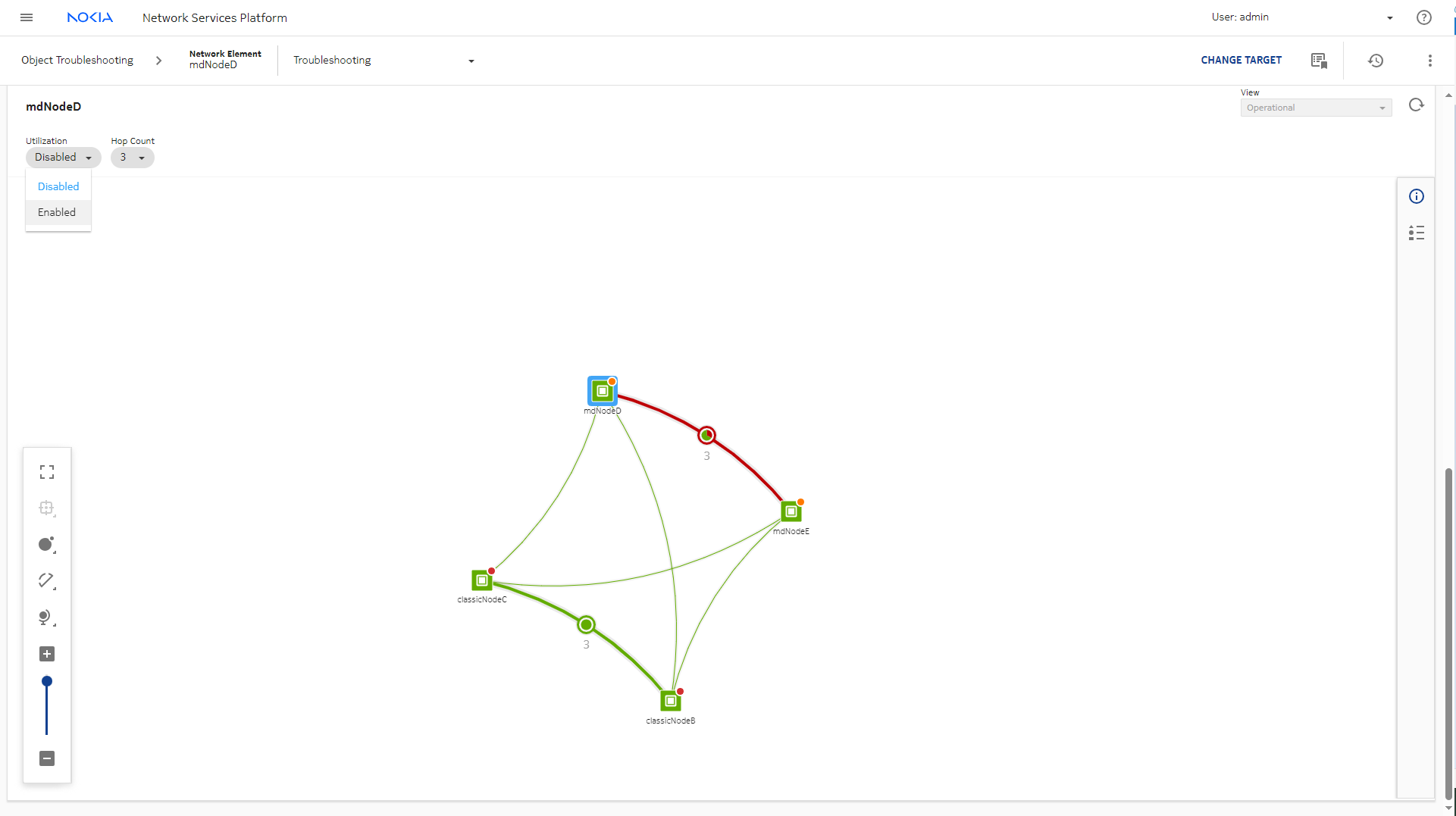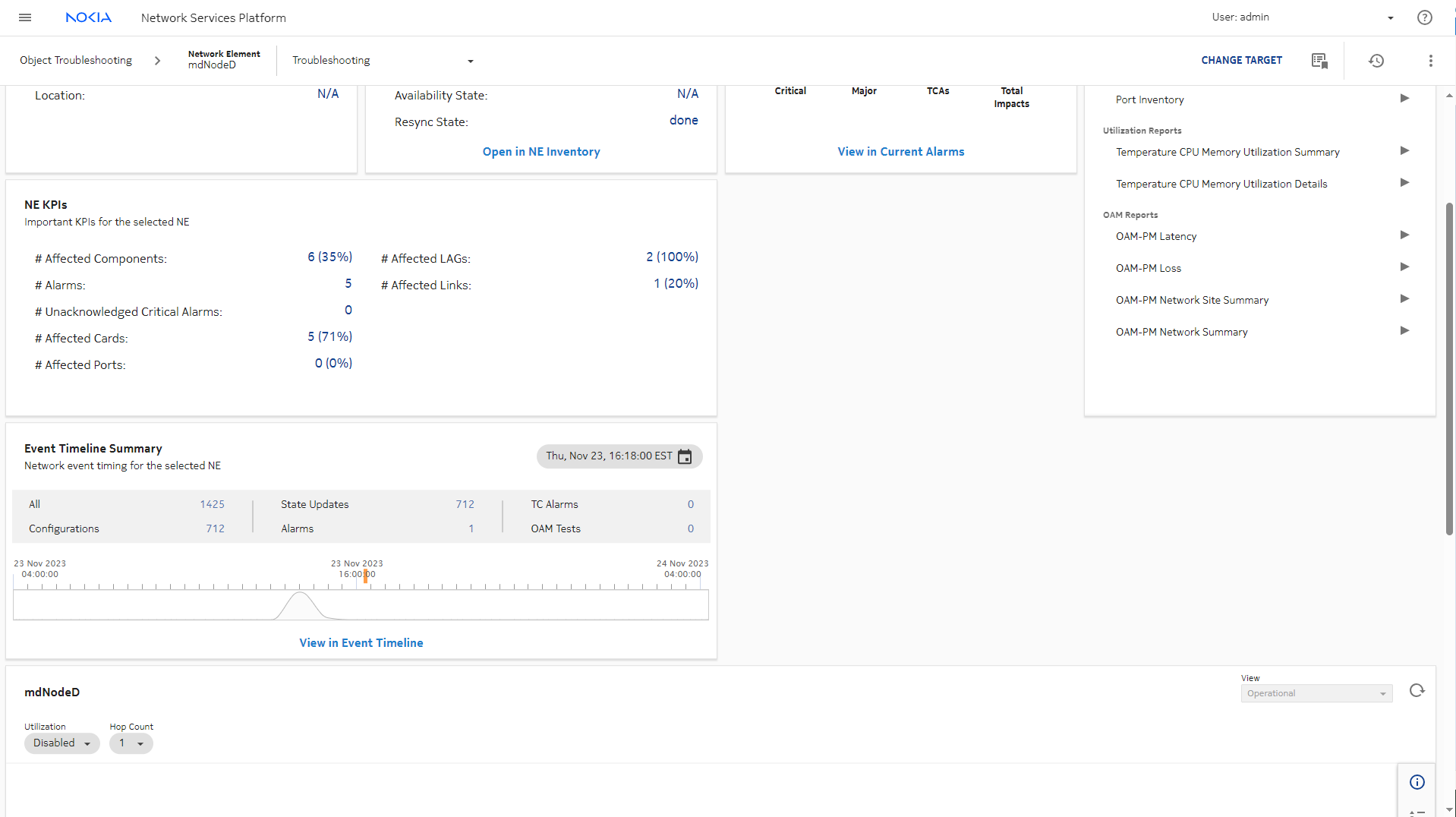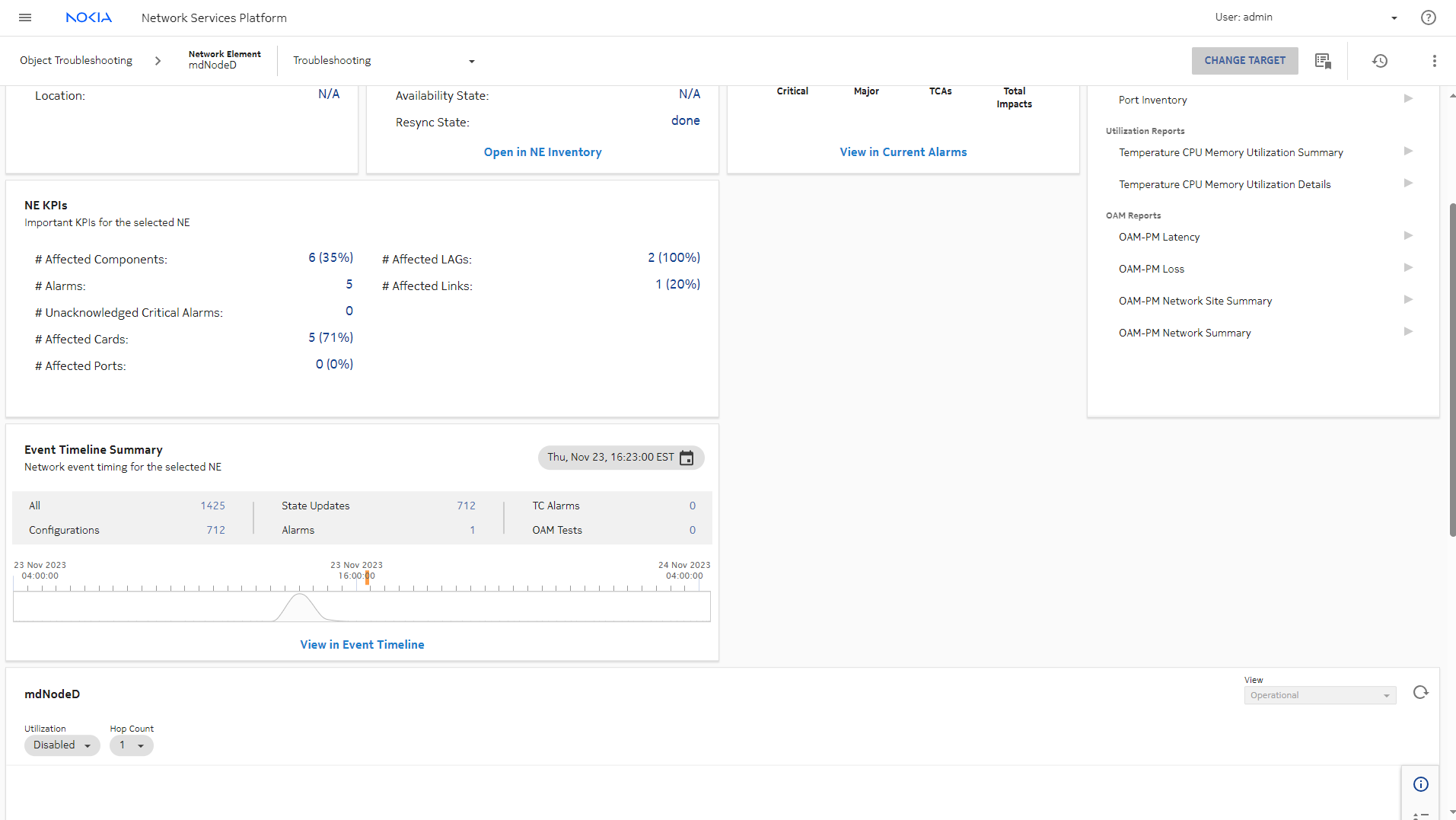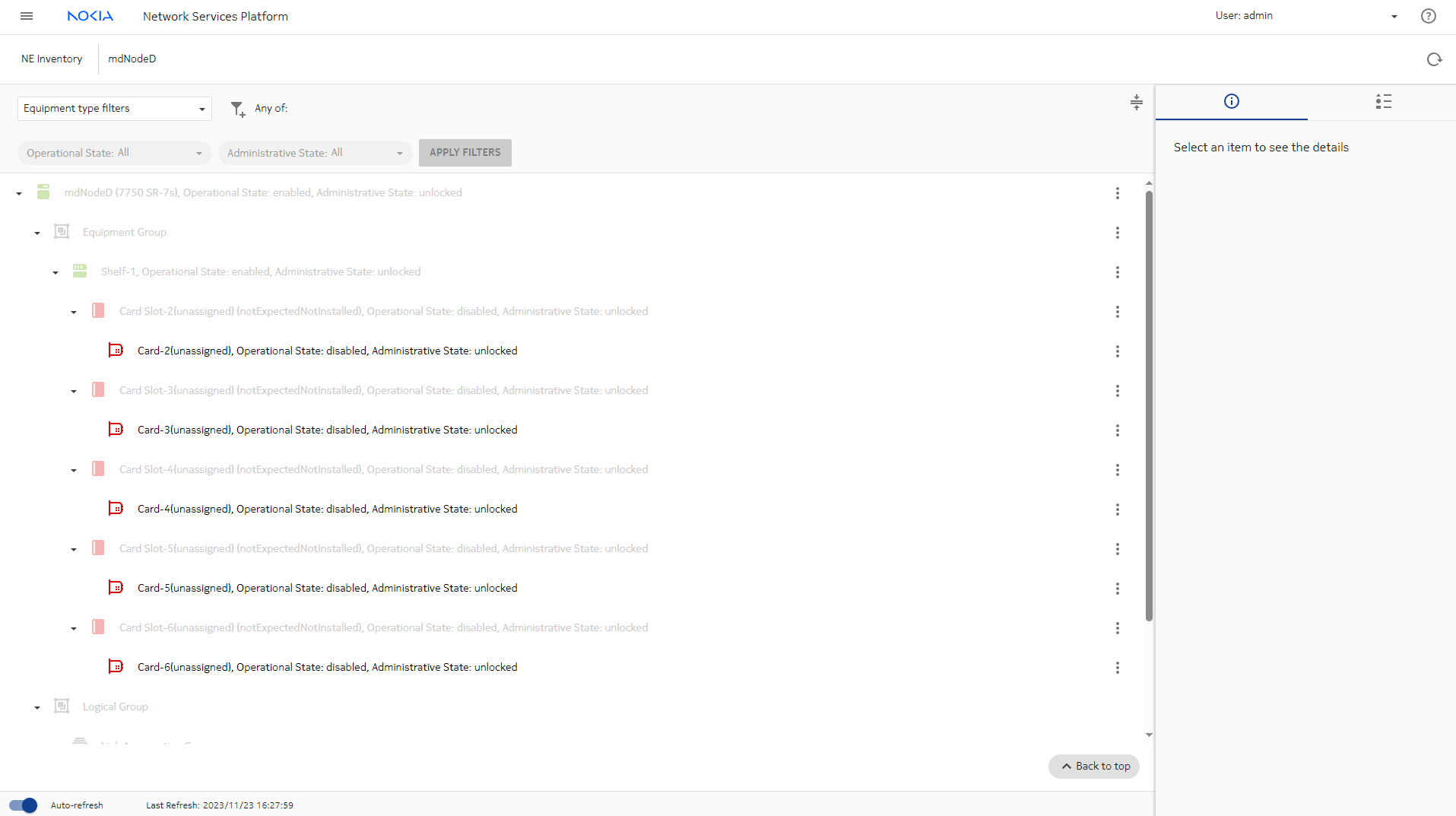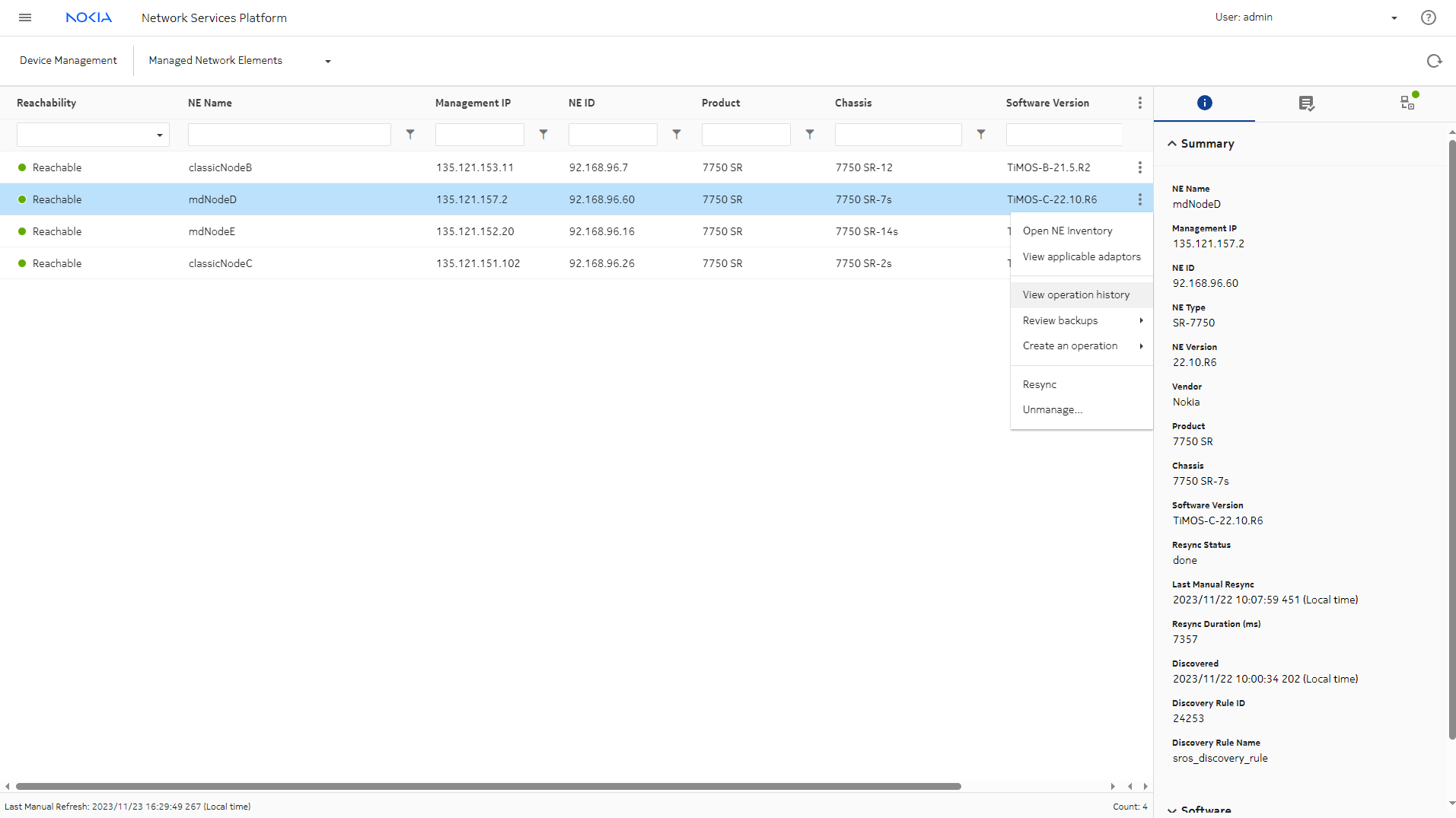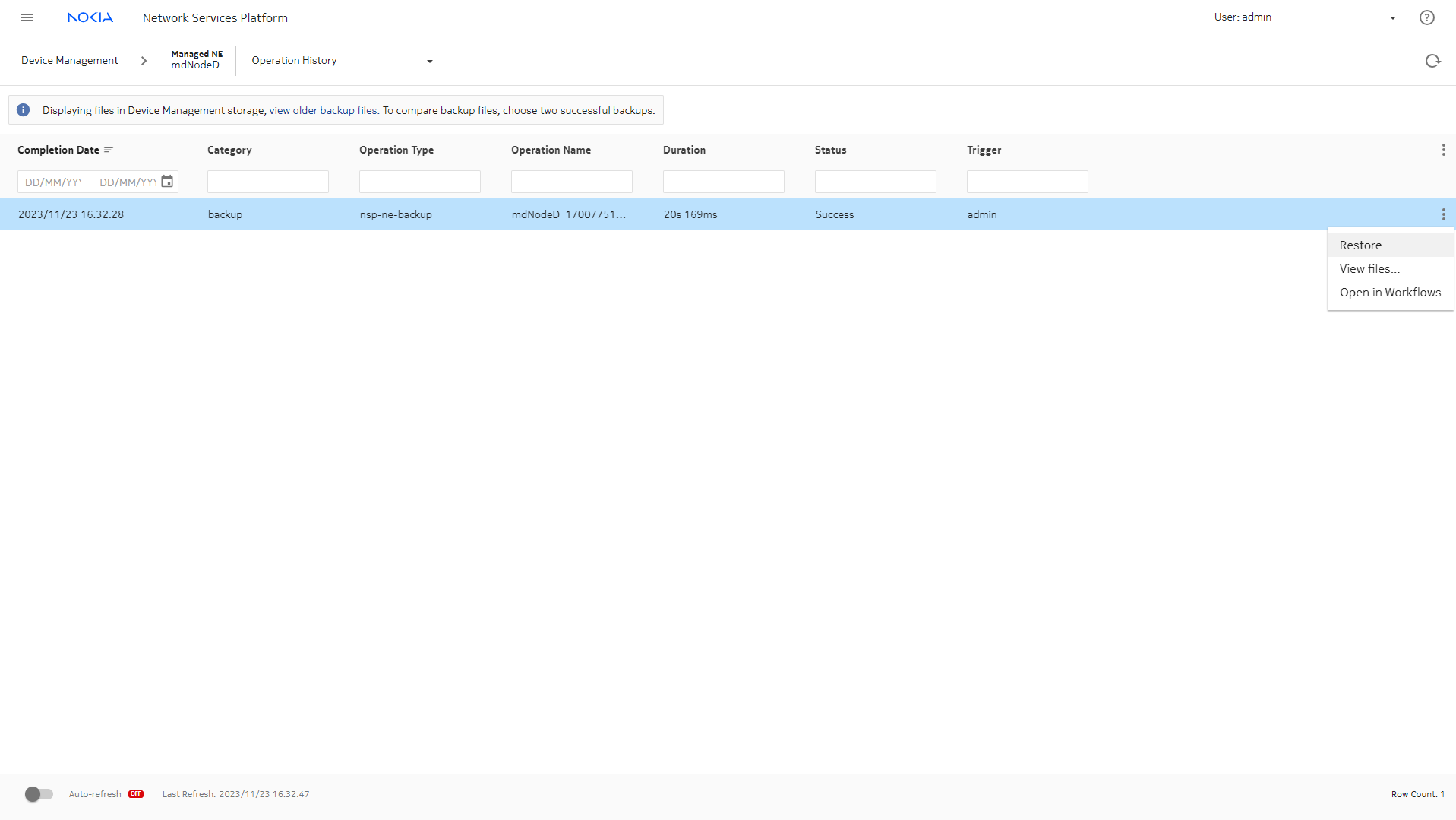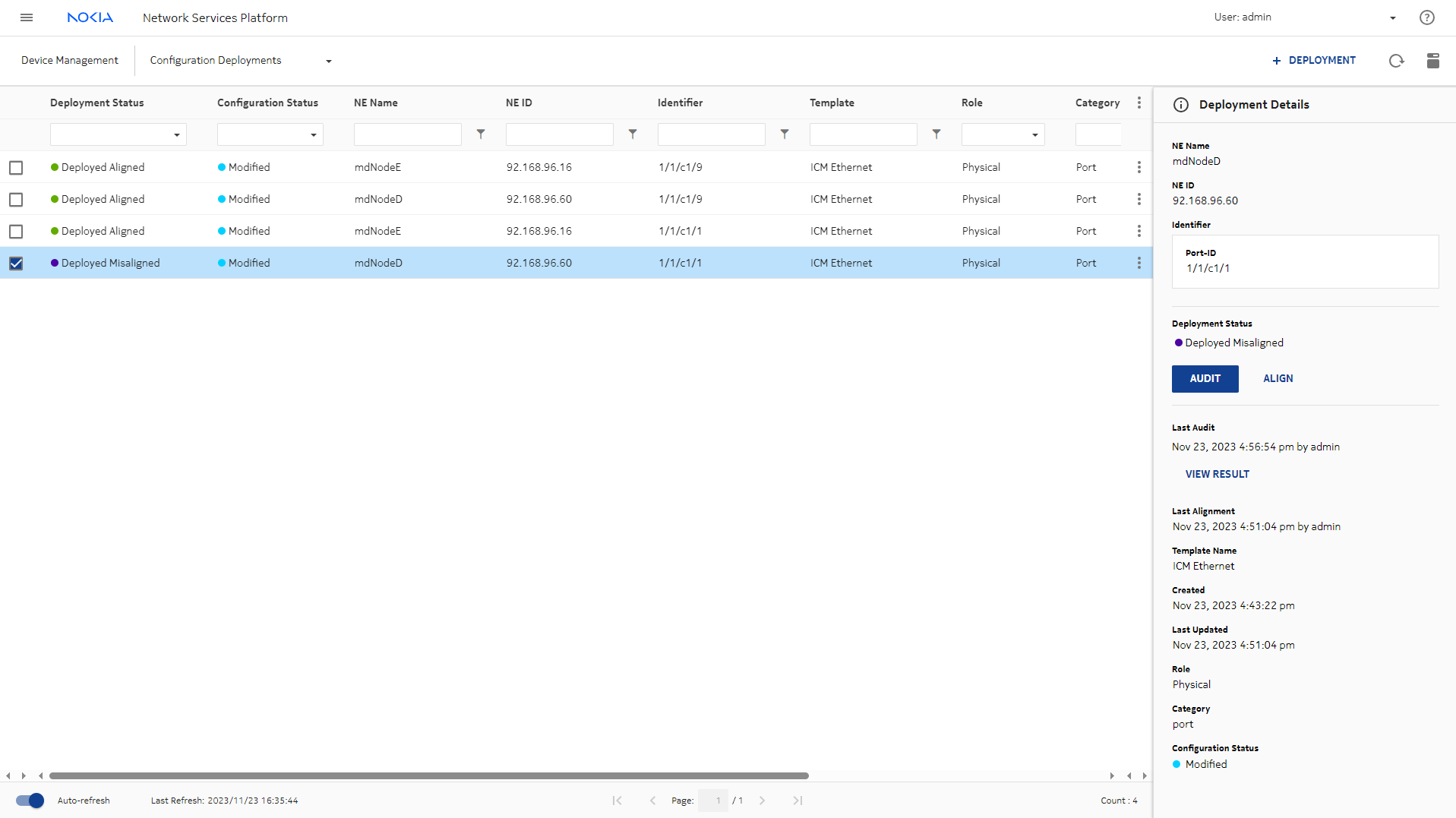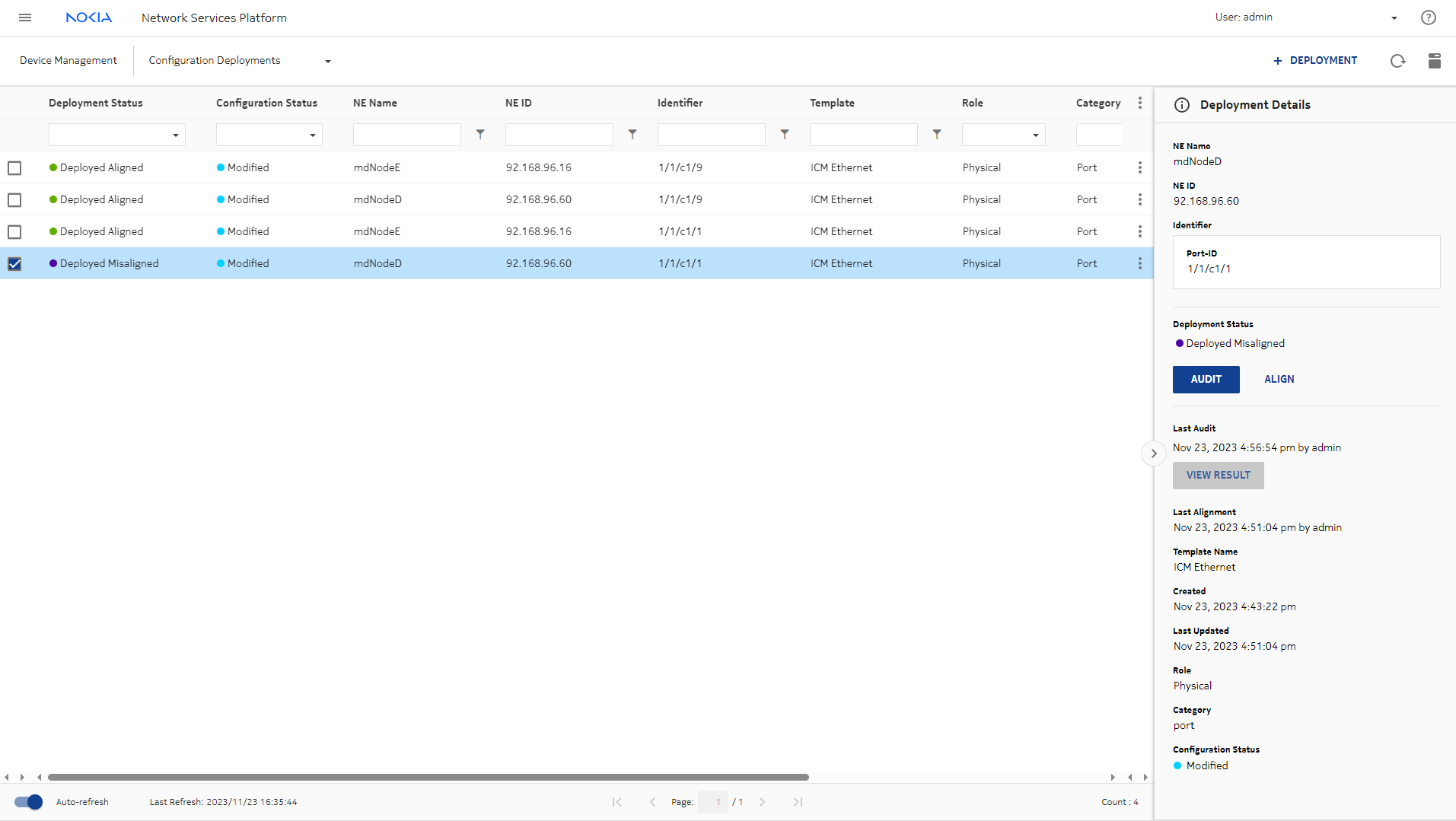End-to-end NE troubleshooting scenario
Purpose
This process shows you how to use NSP in troubleshooting issues on NEs.
In this scenario, an NE is experiencing problems.
View affected equipment related resources
View the News Feed
The News Feed provides a live feed of unacknowledged root cause alarms as they occur in real time. Alarm severity and number of impacts are displayed, and cross launch is available depending on the alarm. All alarms can cross launch to Current Alarms.
View the Network Map and Health dashboard map view
Another option on the Network Map and Health dashboard is the Network Map View. Viewing the NE in the map will show us the status of links, in case there are any port issues affecting connectivity.
